Bolded Quick Summary
Thinking about 22-inch wheels for your Mercedes-Benz S-Class? It’s a popular upgrade for a bolder look and enhanced handling. This guide breaks down everything you need to know, from benefits and considerations to choosing the right set and installation tips. We’ll help you make this stylish and functional enhancement with confidence.
Hey everyone, Charlie Joyce here! So, you’re eyeing those massive 22-inch wheels for your Mercedes-Benz S-Class. It’s a natural thought – bigger wheels often mean a bolder presence and a sportier feel. But what’s really involved? Many S-Class owners wonder if it’s just about looks or if there are practical advantages too. It can seem a little daunting, especially if you’re new to the world of custom wheels. Don’t worry, though! We’re going to walk through this together, step-by-step. You’ll learn about the cool perks of going larger, what you absolutely must consider before you buy, and how to get them fitted safely. Ready to give your S-Class that extra edge? Let’s dive in!
Why Choose 22-Inch Wheels for Your Mercedes-Benz S-Class?
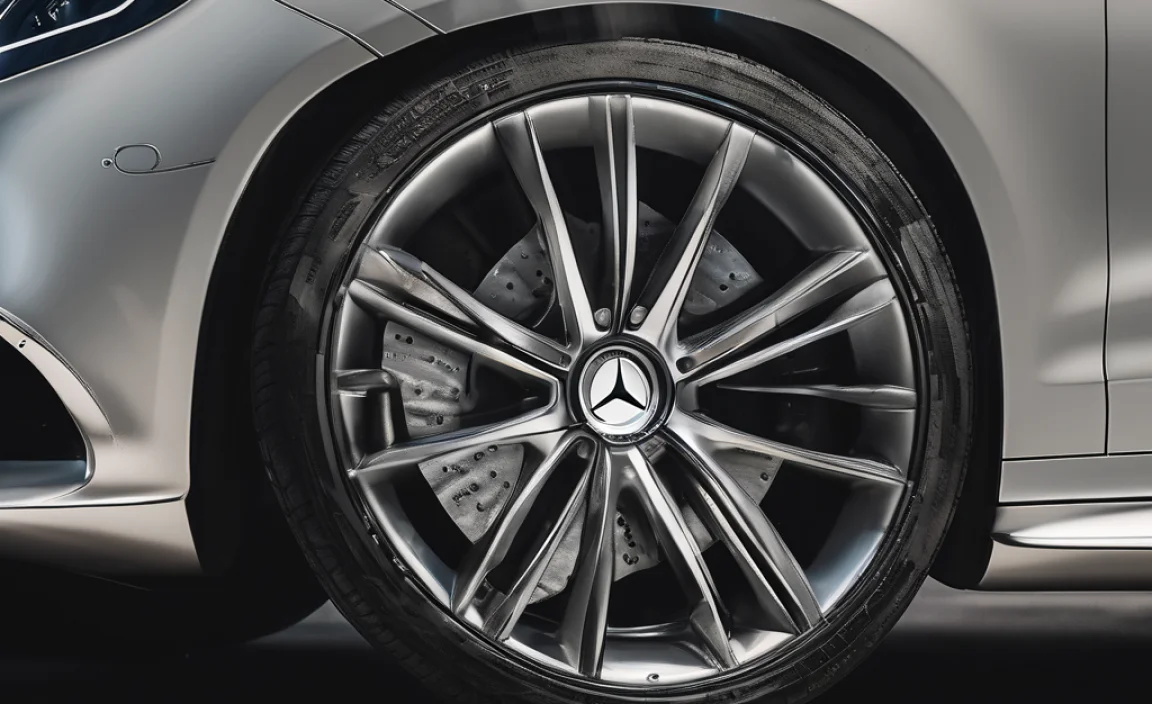
Upgrading to 22-inch wheels on your Mercedes-Benz S-Class is more than just a cosmetic tweak; it’s about transforming the car’s overall character and, in some cases, its performance dynamics. These larger diameter wheels offer a distinct aesthetic, filling out the wheel wells more assertively and giving the S-Class a more imposing and luxurious stance. But the appeal goes beyond just visual impact.
The Aesthetic Advantage
Let’s be honest, the look is a huge part of the draw. 22-inch wheels can dramatically change the profile of your S-Class, making it appear more aggressive, sporty, and high-end. They contribute to a more grounded and premium presence, which is often what S-Class owners aspire to.
Potential Performance Benefits
While it might seem counterintuitive, larger wheels, when paired with the right tires, can sometimes offer improved handling. The lower profile tires that come with 22-inch wheels have less sidewall flex, which can lead to sharper steering response and better cornering stability. This is because the tire essentially becomes an extension of the rim, providing a more direct connection to the road. It’s a subtle change that can make a refined car feel even more dynamic. However, it’s crucial to get this right to avoid negative impacts.
The “Wow” Factor
There’s an undeniable “wow” factor that comes with a set of beautifully designed 22-inch wheels on an S-Class. They command attention and showcase a level of personalization that sets your vehicle apart from others on the road. It’s a statement of taste and a desire for that extra touch of exclusivity.
Key Considerations Before You Upgrade
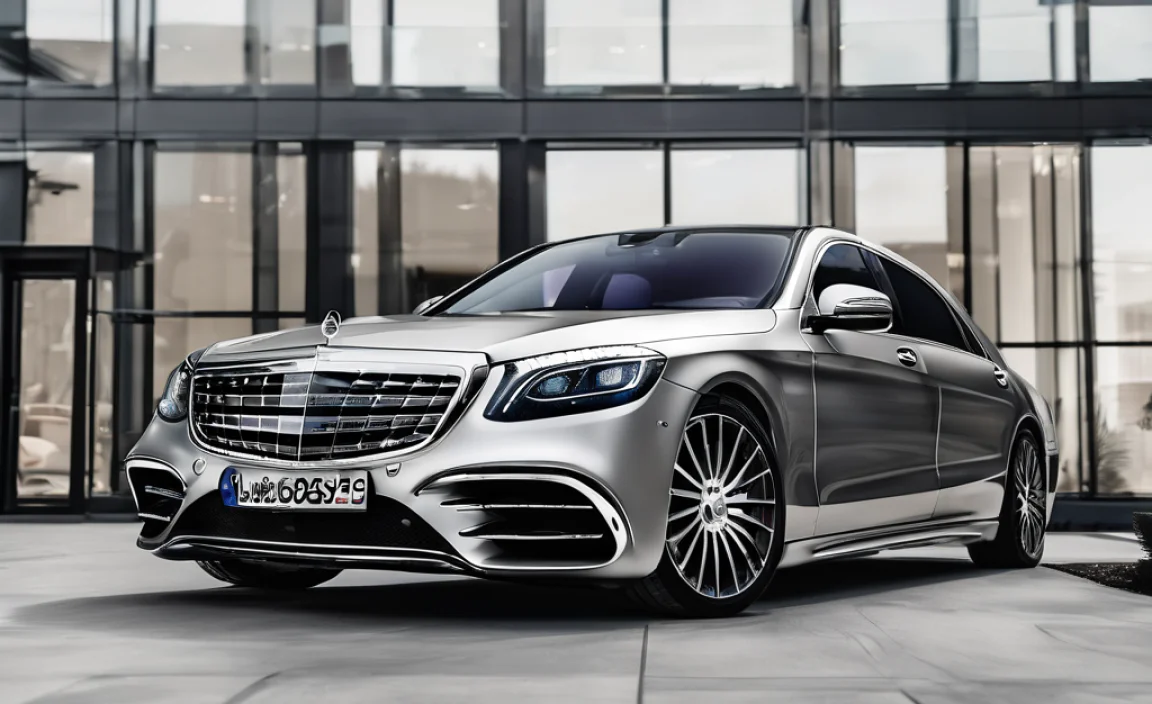
Before you get swept away by the stunning looks of 22-inch wheels, it’s vital to understand the practical implications. This isn’t a simple bolt-on modification; it requires careful thought and planning to ensure compatibility, safety, and a positive ownership experience. Skipping these steps can lead to costly mistakes or even damage to your S-Class.
tirer Size and Wheel Offset
This is probably the most critical technical aspect. When moving to larger wheels, you’ll need to ensure that the overall diameter of the wheel and tire combination remains very close to the original factory specification. This is crucial for several reasons:
- Speedometer Accuracy: If the overall diameter changes significantly, your speedometer and odometer will become inaccurate.
- Suspension Geometry: Incorrect wheel offset can negatively affect the car’s handling, suspension wear, and tire wear.
- Clearance: The wheels and tires must clear the fenders, suspension components, and brakes.
The wheel offset is the distance from the mounting surface of the wheel to the centerline of the wheel. Mercedes-Benz engineers carefully determine the factory offset to ensure optimal performance and clearance. Aftermarket wheels often have different offsets, and choosing the wrong one can lead to rubbing, premature wear on suspension parts, or even instability. It’s essential to consult a reputable wheel specialist or use online calculators designed for your specific S-Class model to find the correct offset range.
Tire Profile and Ride Comfort
Larger wheels typically mean shorter, or “lower profile,” tires. This means there’s less rubber and air between the rim and the road. While this can improve steering response, it also means that road imperfections like potholes, bumps, and uneven surfaces are transmitted more directly into the cabin. Your S-Class known for its plush ride might feel significantly firmer, and the risk of tire or wheel damage from impacts increases.
When choosing tires for 22-inch wheels, look for robust construction. Some tire manufacturers offer “run-flat” technology, which can be beneficial if you experience a puncture, but these can also contribute to a firmer ride.
Weight Considerations
Larger wheels and tires are often heavier than their factory counterparts. This added unsprung weight (weight not supported by the suspension) can negatively impact several areas:
- Acceleration and Braking: Heavier wheels require more force to spin up and slow down, potentially reducing acceleration and increasing braking distances.
- Fuel Economy: Increased rotational mass can slightly decrease fuel efficiency.
- Suspension Wear: The suspension components have to work harder to manage the extra weight, potentially leading to accelerated wear on shocks, struts, and bushings.
Look for lightweight alloy wheels designed specifically for performance and aftermarket applications. Forged wheels, while more expensive, are generally lighter and stronger than cast wheels.
Tire and Wheel Durability
With less tire sidewall to absorb impacts, 22-inch wheels and their tires are more susceptible to damage from potholes, curbs, and road debris. This means you’ll need to be extra vigilant when driving, especially in areas with poor road conditions. The cost of replacing a damaged 22-inch wheel or tire can be significantly higher than for standard sizes.
Consider investing in a good tire and wheel hazard protection plan if available, or be prepared for potential repair or replacement costs down the line. Consulting resources like tire safety guides can help you understand tire construction and ratings.
Legal and Insurance Implications
In some regions, there might be legal restrictions on aftermarket wheel sizes or tire types. It’s always a good idea to check your local automotive regulations. Additionally, modifying your vehicle with non-factory parts like larger wheels can sometimes affect your car insurance policy. It’s wise to inform your insurance provider about the upgrade to ensure you remain covered appropriately.
Choosing the Right 22-Inch Wheels for Your S-Class
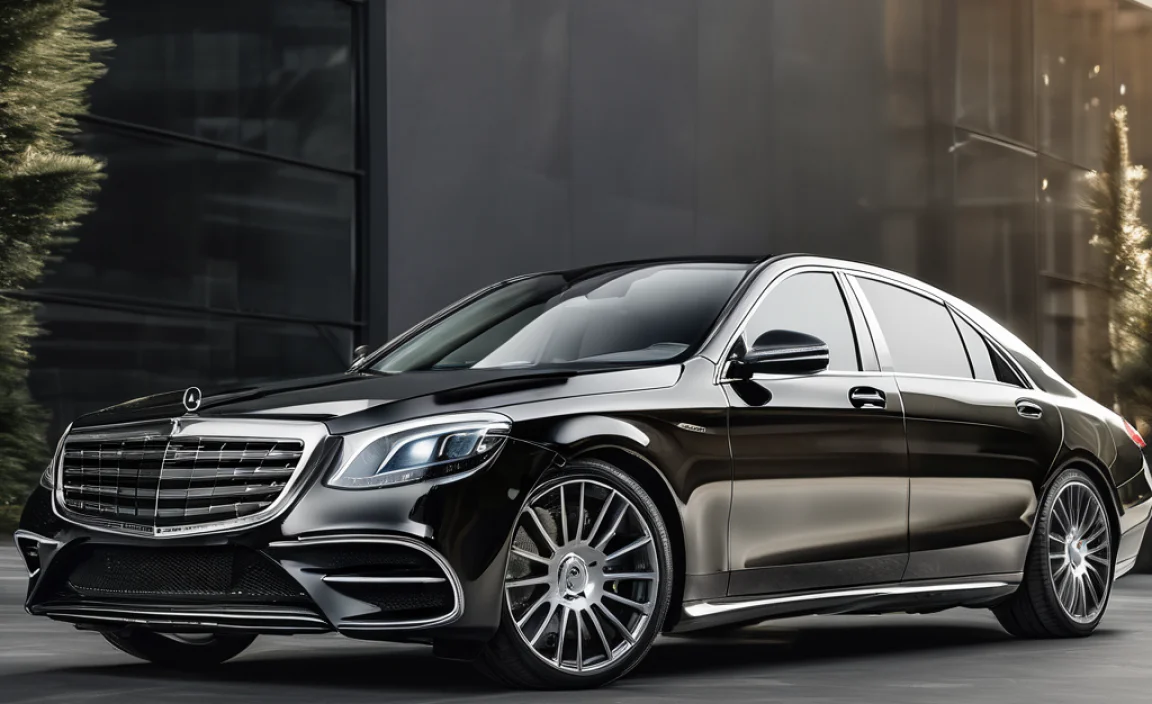
Selecting the perfect set of 22-inch wheels involves balancing aesthetics, performance, and practicality. With so many options available, it pays to do your research and understand what makes a good set.
Material and Construction: Cast vs. Forged
The material and construction method of the wheel significantly impact its strength, weight, and cost.
- Cast Wheels: These are produced by pouring molten aluminum alloy into a mold. They are the most common and budget-friendly option. However, they are generally heavier and can be more prone to cracking under extreme stress compared to forged wheels.
- Forged Wheels: These are made by applying immense pressure to a solid block of aluminum alloy. This process creates a stronger, denser, and significantly lighter wheel. Forged wheels offer superior durability and are often the choice for high-performance vehicles. However, they come with a considerably higher price tag.
For an S-Class, if budget allows, forged wheels offer the best combination of strength, lightness, and performance. If not, high-quality cast wheels from reputable brands can still be a great choice, provided they are engineered for the vehicle’s load requirements.
Design and Finish
The design and finish of your wheels are purely subjective but play a massive role in the overall look of your S-Class. Consider:
- Spoke Design: From intricate multi-spoke designs to bold, split 5-spoke or mesh styles, the spoke count and pattern dramatically alter the wheel’s appearance.
- Color and Finish: Options range from classic silver and chrome to modern matte black, gunmetal, gloss black, or even custom painted finishes. The finish should complement your car’s paint color and trim.
- Concavity: Some wheel designs feature a concave profile, where the spokes curve inward towards the hub. This can create a more aggressive and dynamic look, often making the wheel appear larger.
Look at examples of S-Class models with different wheel styles to get a feel for what you like best. Many manufacturers offer visualizer tools on their websites.
Reputable Brands and Quality
When it comes to aftermarket wheels, quality and brand reputation are paramount. Stick with well-established manufacturers known for their engineering, quality control, and safety standards. Some reputable brands include:
- HRE Performance Wheels
- BBS
- ADV.1
- Forgiato
- Vossen Wheels
- Rohana Wheels
These brands often have specific lines designed to meet the stringent requirements of luxury vehicles like the S-Class. Research reviews and forums for feedback on specific wheel models and brands.
Tire Selection – The Essential Partner
Your choice of tires is just as important as the wheels themselves. You’ll need tires specifically sized for 22-inch wheels and that match the required load index and speed rating for your S-Class. Common tire sizes for 22-inch upgrades might include 265/30R22 or 275/30R22, but always verify the exact specifications for your model year.
Prioritize tires that offer a good balance of grip, comfort, and durability. Brands like Michelin, Pirelli, Continental, and Goodyear offer high-performance or ultra-high-performance tires that can complement the upgrade. Consider these factors:
- Treadwear Rating: Indicates how long the tire is expected to last.
- Traction Rating: Measures the tire’s ability to stop on wet surfaces.
- Temperature Rating: Indicates the tire’s resistance to heat buildup.
- Load Index and Speed Rating: These must meet or exceed the manufacturer’s specifications for your S-Class. Using tires with insufficient ratings is DANGEROUS.
A helpful resource for understanding tire specifications is the National Highway Traffic Safety Administration (NHTSA) website on tire information.
Installation: DIY vs. Professional
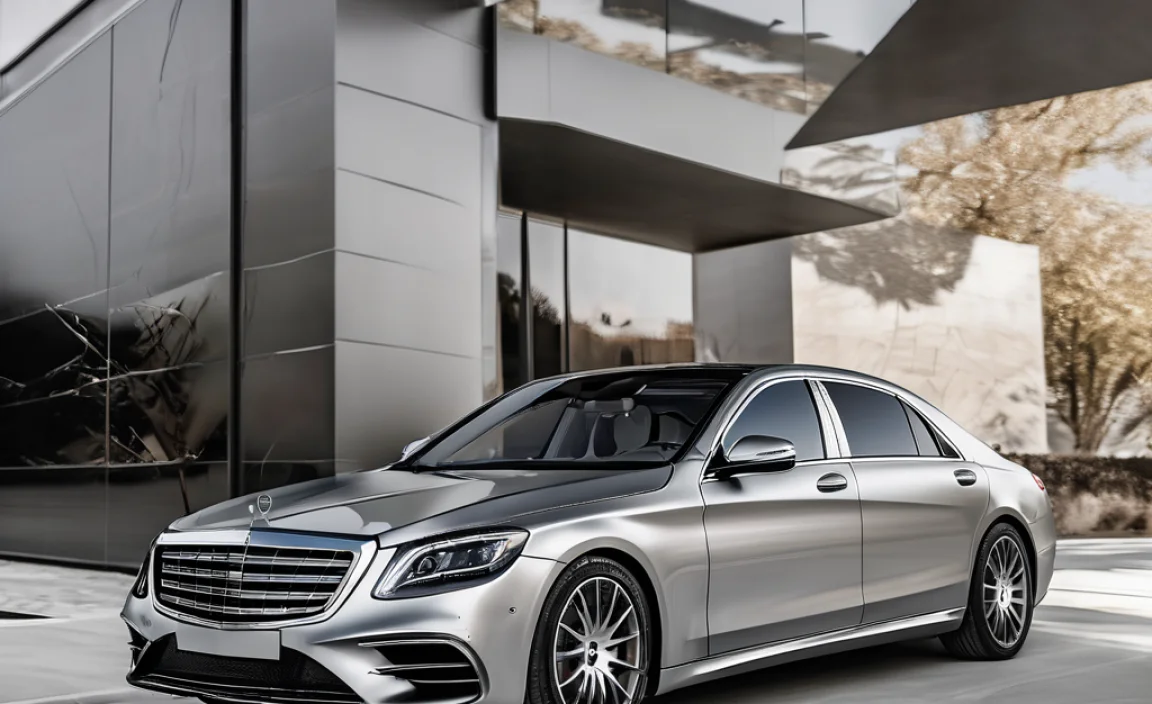
While the allure of DIY is strong for many car enthusiasts, installing larger, heavier wheels like 22-inchers on a luxury vehicle like the S-Class is a task best left to professionals for several key reasons.
Why Professional Installation is Recommended
Professional installers have the specialized tools, knowledge, and experience to ensure your new wheels are fitted safely and correctly. This includes:
- Correct Torque Specifications: Lug nuts must be tightened to precise torque specifications using a calibrated torque wrench. Overtightening can damage the wheel studs or the wheel itself, while undertightening can lead to the wheel becoming loose.
- Balancing: Larger wheels require precise balancing to prevent vibrations at speed. Professional shops use high-tech balancing machines.
- Mounting and Demounting: Specialized tire machines are needed to safely mount and dismount low-profile tires onto large diameter rims without damaging either.
- Fitment Verification: Professionals can double-check that the wheels clear all suspension components, brake calipers, and the fenders, especially when turning.
- TPMS Calibration: If your S-Class has a Tire Pressure Monitoring System (TPMS), it needs to be correctly relearned or reset for the new wheels.
Many reputable wheel and tire shops offer installation services. It’s an investment in your vehicle’s safety and the longevity of your upgrade.
What to Expect During Professional Installation
The process typically involves:
- Safely Lifting the Vehicle: Using a lift or jack stands rated for the vehicle’s weight.
- Removing Existing Wheels and Tires.
- Mounting New Tires onto the 22-inch Wheels.
- Balancing the Wheel and Tire Assemblies.
- Installing the Wheels onto the S-Class Hubs.
- Tightening Lug Nuts to Correct Torque Specifications in a star pattern.
- Calibrating TPMS Sensors (if applicable).
- Road Testing briefly to check for any immediate issues.
The entire process can take a few hours, depending on the shop’s workload.
When to Consider Other Upgrades Alongside 22-Inch Wheels
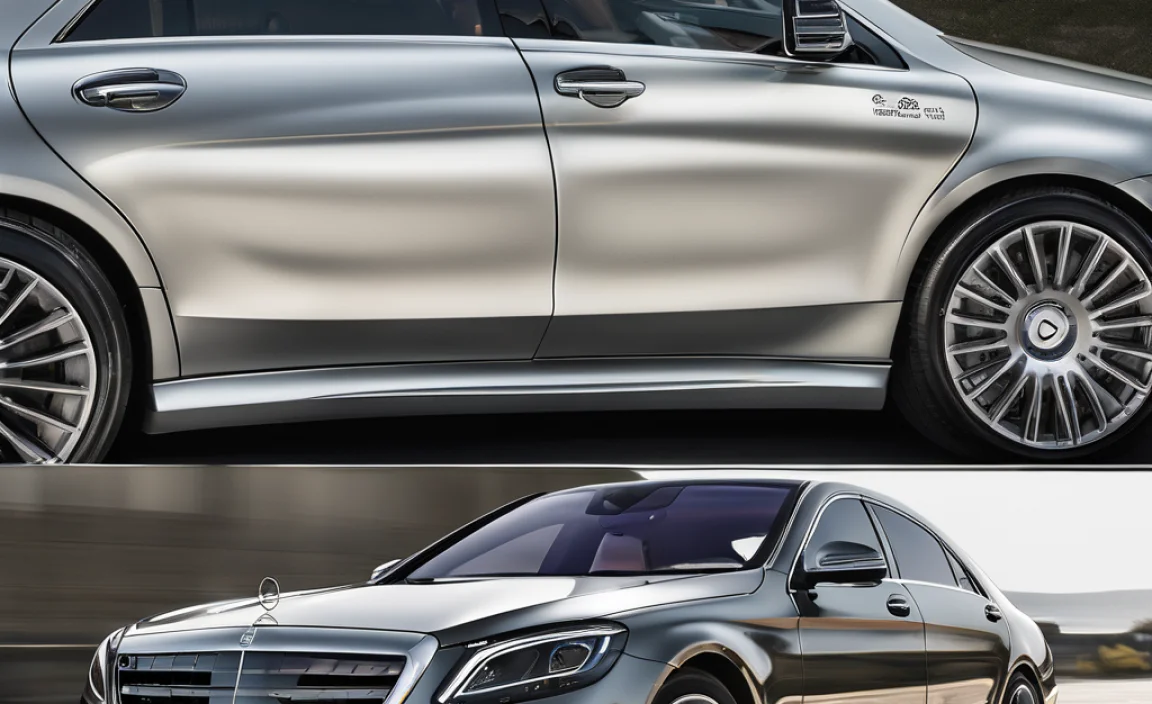
While 22-inch wheels are a significant visual and potential performance upgrade, they might be best complemented by other modifications to maximize their impact and ensure optimal function.
Suspension Modifications
If you opt for significantly lower profile tires, you might notice a harsher ride. To compensate, some owners consider:
- Adjustable Coilovers or Air Suspension: These allow for ride height and stiffness adjustment, offering a more customizable ride.
- Upgraded Springs: Sportier springs can maintain a lower center of gravity and improve handling, though they can also firm up the ride.
It’s important that any suspension modification is compatible with your S-Class and designed to work with larger wheel sizes. Consulting a suspension specialist is highly recommended.
Brake Upgrades
Larger diameter wheels naturally create more space within the wheel well. This presents an opportunity to upgrade your braking system. Larger rotors and calipers can:
- Improve Stopping Power: Essential for a heavier vehicle like the S-Class.
- Enhance Heat Dissipation: Reducing brake fade during aggressive driving or downhill descents.
- Fill the Larger Wheel Well: Many performance brake kits look as good as they perform, filling the void created by larger wheels.
Ensure any brake kit you consider is designed to fit with your chosen 22-inch wheels. Consult a brake specialist.
Pros and Cons of 22-Inch Wheels for Mercedes-Benz S-Class
To help you make a well-informed decision, here’s a breakdown of the advantages and disadvantages:
| Pros | Cons |
|---|---|
| Enhanced Aesthetics: More aggressive, sporty, and luxurious stance. | Reduced Ride Comfort: Firmer ride due to lower profile tires. |
| Improved Handling: Sharper steering response and better cornering stability (with proper tires). | Increased Risk of Damage: More susceptible to potholes and curb impacts. |
| “Wow” Factor: Makes the vehicle stand out. | Higher Cost: Wheels, tires, and potential installation costs are greater. |
| Potential for Larger Brake Fitment: Creates space for upgraded brake systems. | Increased Weight: Can slightly affect acceleration, braking, and fuel economy. |
| Expands Customization Options: Access to a wider range of wheel designs. | Potential for Increased Tire Wear: If alignment or suspension is affected. |
Frequently Asked Questions (FAQ)
Q1: Will 22-inch wheels fit my S-Class without modification?
While many 22-inch wheel and tire combinations can fit an S-Class with the correct offset and tire size, some configurations might require minor fender liner adjustments or rolling. It’s crucial to use a reputable supplier who can guarantee fitment for your specific S-Class model year.
Q2: How much does a set of 22-inch wheels and tires for an S-Class typically cost?
Costs vary widely based on brand, material (cast vs. forged), design, and tire quality. You can expect to spend anywhere from $3,000 to $10,000+ for a complete set of four wheels and tires, with forged wheels and premium tires being at the higher end.
Q3: Will my speedometer be inaccurate with 22-inch wheels?
If the overall diameter of your new 22-inch wheel and tire combination is kept very close to the original factory diameter, your speedometer should remain accurate. This is why selecting the correct tire size (e.g., 265/30R22 or 275/30R22) is vital. Always verify this with your wheel specialist.
Q4: What is the “offset” and why is it important for S-Class wheels?
Offset refers to the distance between the wheel’s mounting surface and its centerline. The correct offset ensures the wheel sits properly within the fender, clears suspension components and brakes, and contributes to stable handling. An incorrect offset can lead to premature tire wear, rubbing, or even damage to suspension parts.
Q5: Can I reuse my existing TPMS sensors?
Yes, in most cases. Your existing Tire Pressure Monitoring System (TPMS) sensors can typically be transferred from your old wheels to your new 22-inch wheels. However, it’s important to have a professional installer do this and then properly relearn or reset the system for your vehicle.
Q6: How will 22-inch wheels affect my S-Class’s handling?
With lower profile tires, you can expect sharper steering response and reduced body roll in corners, leading to a sportier feel. However, this comes at the expense of absorbing road imperfections, potentially making the ride noticeably firmer and less comfortable than stock.
Q7: Are 22-inch wheels too big for the Mercedes-Benz S-Class?
Whether 22-inch wheels are “too big” is subjective and depends on your priorities. They offer a dramatic aesthetic and can enhance handling, but they do compromise ride comfort and increase the risk of damage. For many, they are an acceptable compromise for the visual and driving experience they provide, especially when properly specified and installed.
Conclusion
Upgrading your Mercedes-Benz S-Class to 22-inch wheels is a significant modification that can elevate its presence and driving dynamics. It’s an essential upgrade for those who seek a more aggressive, personalized look and are willing to embrace the trade-offs in ride comfort and vigilance for road hazards. By carefully considering wheel and tire specifications, prioritizing quality brands, and ensuring professional installation, you can confidently achieve a stunning look that’s also safe and functional.
Remember, the key is meticulous planning. Consult with reputable wheel specialists, understand the technical aspects like offset and tire sizing, and choose components that are engineered to perform. With the right approach, your S-Class will not only look spectacular but also maintain reliable performance, turning heads for all the right reasons. Happy cruising!